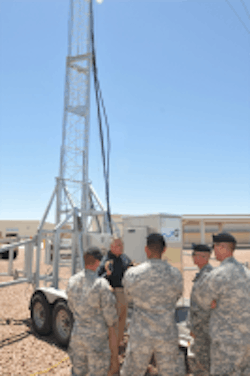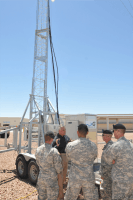xMax network hopes to provide secure radio for soldiers
Posted by Skyler Frink
"We are an absolutely different type of wireless communication," Coleman said. The xMax network operates on a series of frequencies, which happens by assigning it a swath of frequencies. Currently, the system uses 90.2-92.8, as those are freely available. The network is spectrum agnostic, however, meaning it is capable of using any available frequencies.
When activated, devices using the xMax network monitor the entire swath they are assigned. If there is interference the device will jump to a different frequency, and can change frequencies up to 33 times in one second. "Unlike other radios, this radio looks for interference; it finds open spaces in the spectrum and uses them," Coleman explained.
The network uses Internet Protocol (IP), making it compatible with off-the-shelf devices. "What we have developed is the mobile version of Vonage and Skype," Coleman said. The ability to communicate using IP allows data, voice and video to be sent over the network. In addition to being usable with off-the-shelf products, the network is also application agnostic, allowing third-parties to develop applications for their specific needs.
xMax is also globally deployable. All a user needs is a Xmod, a small box that serves as a mobile hotspot for the network.
In tests with the Army, all attempts to jam the network using three different methods failed. The network's ability to monitor and switch to unused frequencies made it too difficult for the Army's own jamming equipment. Coleman plans on making the xMax the world's most interference-tolerant radio.
Due to be deployable in the summer of next year, Coleman believes the xMax will give soldiers the information they need on the front lines. "I came here [xG technology] based on my experience of 30 years with the Marines," Coleman said. "I recognize the value of this system."
Related stories
Warfighters on the digital battlefield require robust information technology for secure, reliable, real-time access to mission-critical information
Pocket-sized analog FM radio test sets for go/no-go radio tests in the field introduced by Rohde & Schwarz
SDR and cognitive radio: the new horizons of military communications

